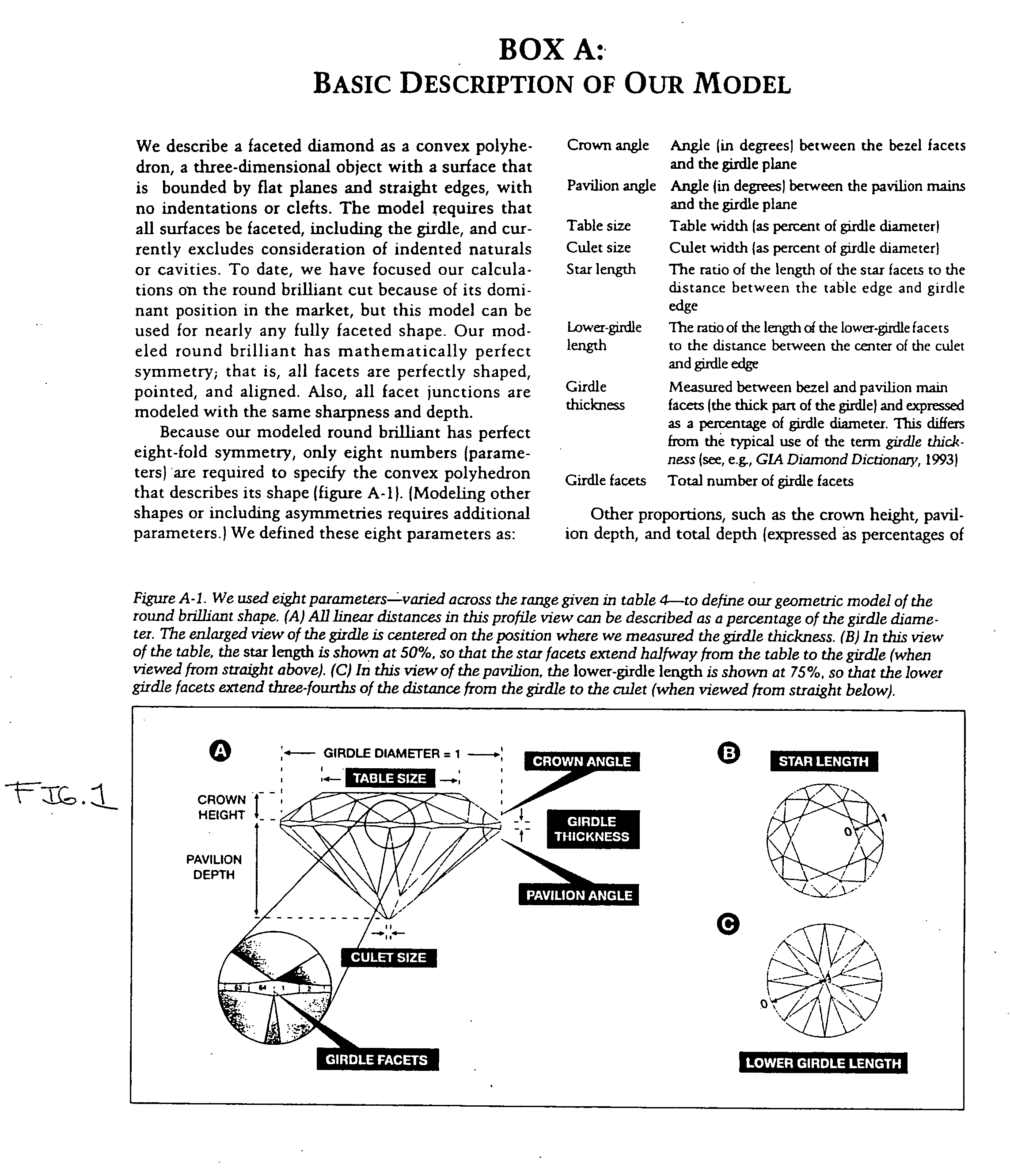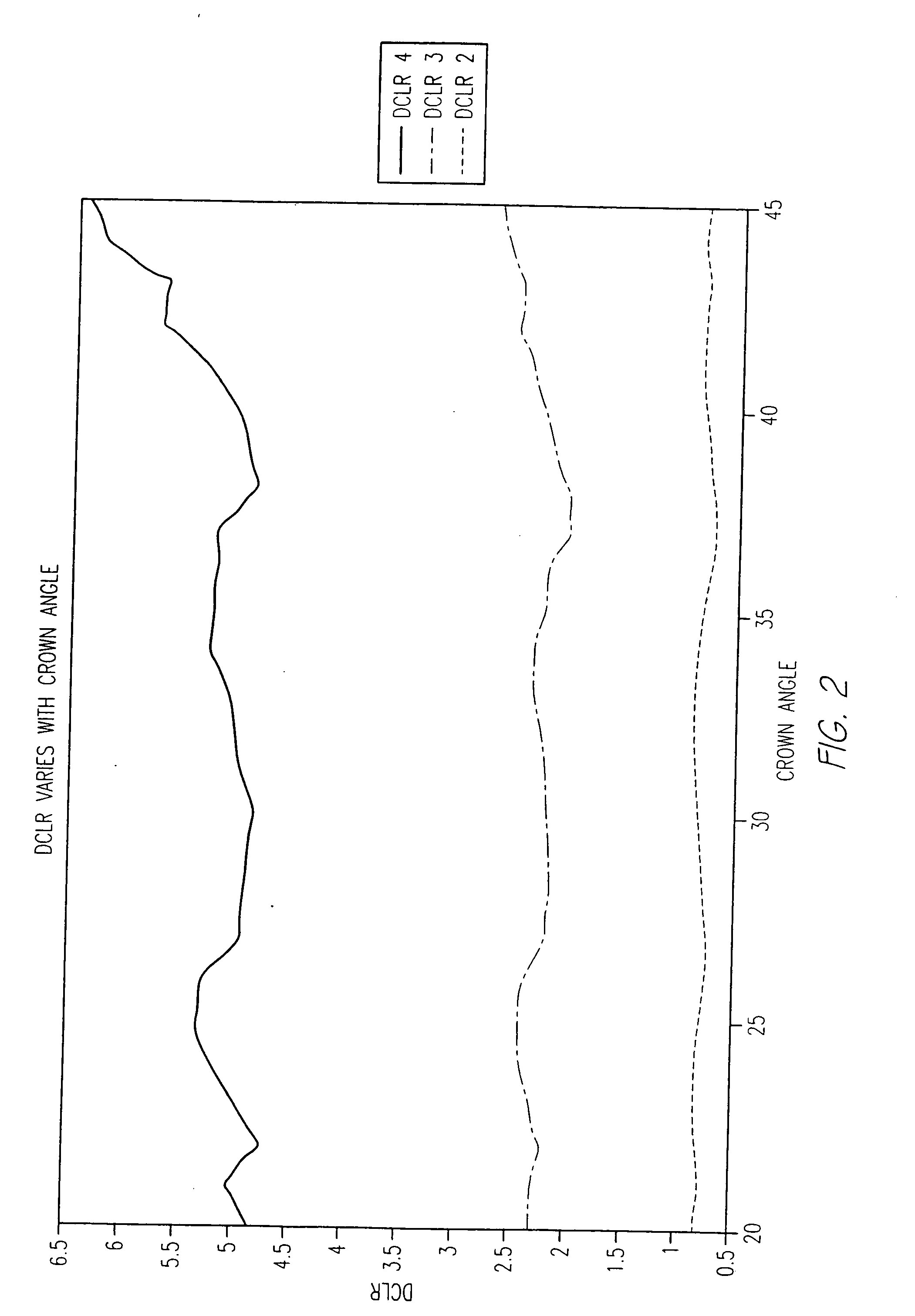Systems and methods for evaluating the appearance of a gemstone
a technology of appearance and gemstone, applied in the field of gemstone appearance evaluation systems and methods, can solve the problems of not being able to verify the extent to which any of his rays would be dispersed, no system described to date has adequately accounted for the rather complex relationship between cut proportions, and cannot be expressed mathematically without making assumptions and qualifications
- Summary
- Abstract
- Description
- Claims
- Application Information
AI Technical Summary
Benefits of technology
Problems solved by technology
Method used
Image
Examples
Embodiment Construction
[0044] Assumptions and Methods. The mathematical model presented here creates a fresh structure for examining nearly all aspects of the influence that cut has on a diamond's appearance. FIG. 1 provides the assumptions on which a preferred model may be based: a detailed list of the physical properties included in the model, a mathematical description of the proportions of the round brilliant, and a description of the lighting condition used in this study. The details of the lighting conditions affect the specific numerical values we present here. The model traces light from the modeled light source through a mathematical representation of a round brilliant of any chosen proportions (referred to hereafter as the “virtual” diamond) to produce two kinds of results: (1) digital images of the virtual diamond, and (2) a numerical evaluation of an appearance concept (in this case, fire).
[0045] The metrics disclosed herein may be run on any computer, such as a Pentium-based PC using standar...
PUM
| Property | Measurement | Unit |
|---|---|---|
| pavilion angle | aaaaa | aaaaa |
| pavilion angle | aaaaa | aaaaa |
| pavilion angle | aaaaa | aaaaa |
Abstract
Description
Claims
Application Information
 Login to View More
Login to View More - R&D
- Intellectual Property
- Life Sciences
- Materials
- Tech Scout
- Unparalleled Data Quality
- Higher Quality Content
- 60% Fewer Hallucinations
Browse by: Latest US Patents, China's latest patents, Technical Efficacy Thesaurus, Application Domain, Technology Topic, Popular Technical Reports.
© 2025 PatSnap. All rights reserved.Legal|Privacy policy|Modern Slavery Act Transparency Statement|Sitemap|About US| Contact US: help@patsnap.com



